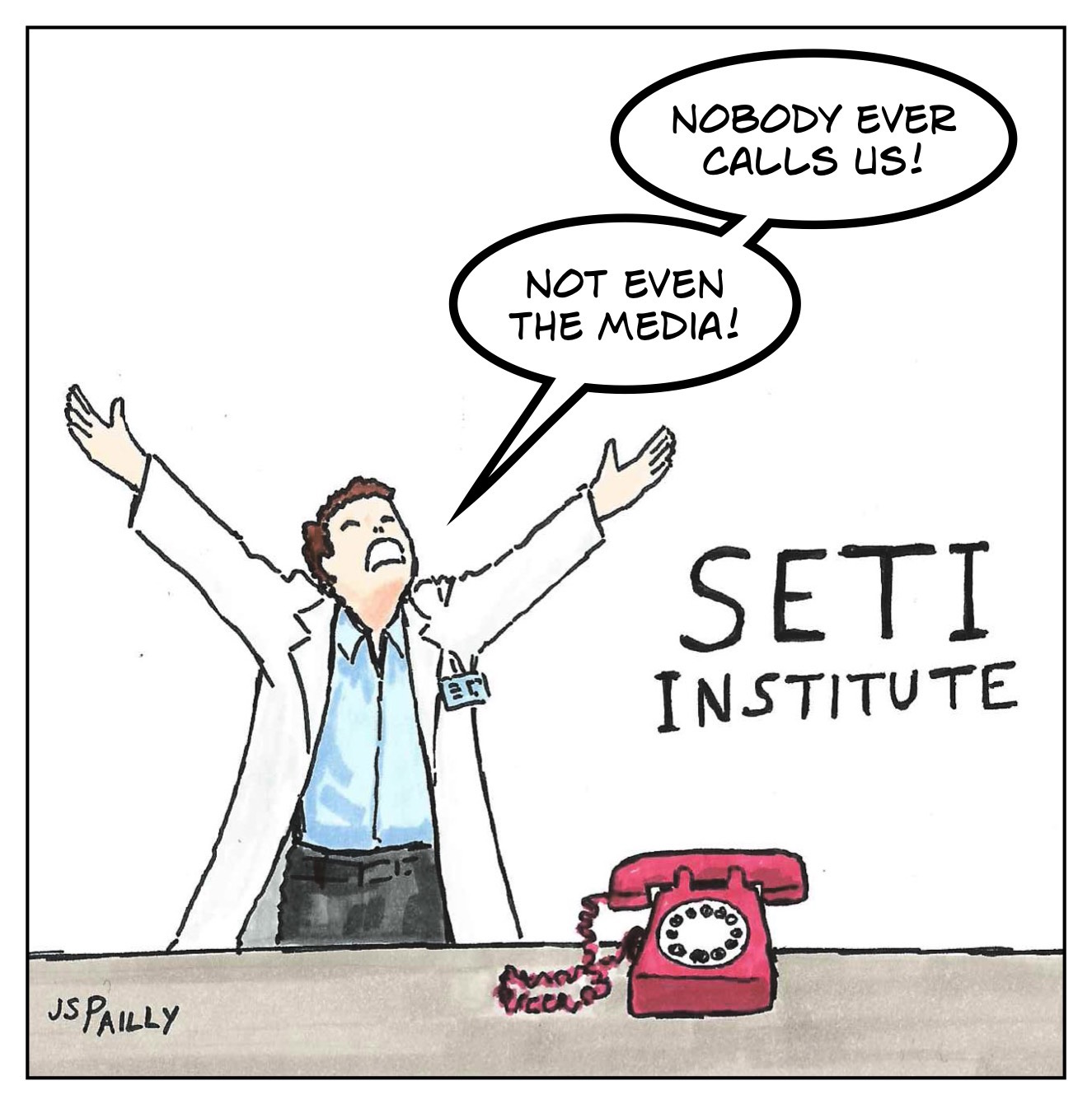
Welcome to a special A to Z Challenge edition of Sciency Words! Sciency Words is an ongoing series here on Planet Pailly about the definitions and etymologies of science or science-related terms. In today’s post, S is for:
SETI
In September of 1959, Italian physicist Giuseppi Cocconi and American physicist Philip Morrison published this paper, titled “Searching for Interstellar Communications.” That paper is essentially the founding document for SETI, the search for extraterrestrial intelligence, which is now considered a subfield of astrobiology.
The SETI Institute, on the other hand, was established in 1984 by Thomas Pierson and Jill Tarter. As stated in this report on the proper use of SETI nomenclature:
SETI should not be used as a shorthand for the SETI Institute, which is an independent entity and should be referred to by its full name to avoid confusion.
And let me tell you, this SETI vs. SETI Institute distinction… that really can cause a lot of confusion.
A few years back, I saw a report on the news. SETI (the Institute, I presumed) had picked up a signal form outer space, from a star located 94 light years away. According to the news lady on TV, a SETI spokesperson had this to say, and that to say, and some more stuff to say about this amazing discovery. “Oh cool,” I thought, and I quickly went to the SETI Institute’s webpage to learn more.
There was nothing—absolutely nothing—about it.
Another day or two went by, and then this article was posted on the SETI Institute’s website. Some Russian radio astronomers had picked up what they thought was a SETI signal (it eventually turned out to be a satellite). Somehow the media picked up on this story and ran with it, apparently without contacting the SETI Institute—or speaking with any actual SETI Institute spokesperson—to find out if any of this were true.

I should probably mention that in my day job, I work in the T.V. news business. This sort of sloppy journalism infuriates me, but I’ve found that it’s quite typical of how the popular press handles science news.
However, to be fair, prior to that misleading news report, I didn’t know to make a clear distinction between SETI and the SETI Institute myself. But I’ve tried to be more careful about this ever since. Language can be a messy way to communicate, so it’s important to try to be clear about what we mean. Otherwise, someone (perhaps even someone from the media) will get the wrong idea and run with it.
Next time on Sciency Words A to Z, the first astronauts on Titan may find themselves in a very sticky situation.
This reminds me of a misconception, common among conspiracy theorists, that NASA (or the government) controls all the astronomy telescopes.
But I have do admit that it never occurred to me that someone would use the acronym SETI for something unconnected to the organization. Honestly, at this point, it seems pretty misleading, even if someone is independently searching for extraterrestrial intelligence.
LikeLiked by 2 people
In case anyone reading this is worried – no government agency nor secret society of any sort controls my telescope. Rest easy.
LikeLiked by 2 people
I think that misconception has been fed by the media as well. I’ve seen a number of discoveries wrongly attributed to NASA on the news.
I kind of get why the SETI vs SETI Institute mistake happens, but I can’t figure out why anyone would think the European Southern Observatory (for example) is part of NASA.
LikeLiked by 1 person
I get the impression that news stories for “human interest” are not subjected to journalism, whether the story is surfing dogs or chatty aliens.
LikeLiked by 1 person
As someone who works in the news business, I can tell you you are exactly right. Science news is not held to the same standards as crime, politics, or the economy. But it should be.
LikeLiked by 2 people
I spent a few years as part of the SETI group, by letting them search via my computer. It was interesting.
LikeLiked by 1 person
I bet! SETI produces a ton of data, I know the SETI@Home program has done a lot to help sort through it all.
LikeLike